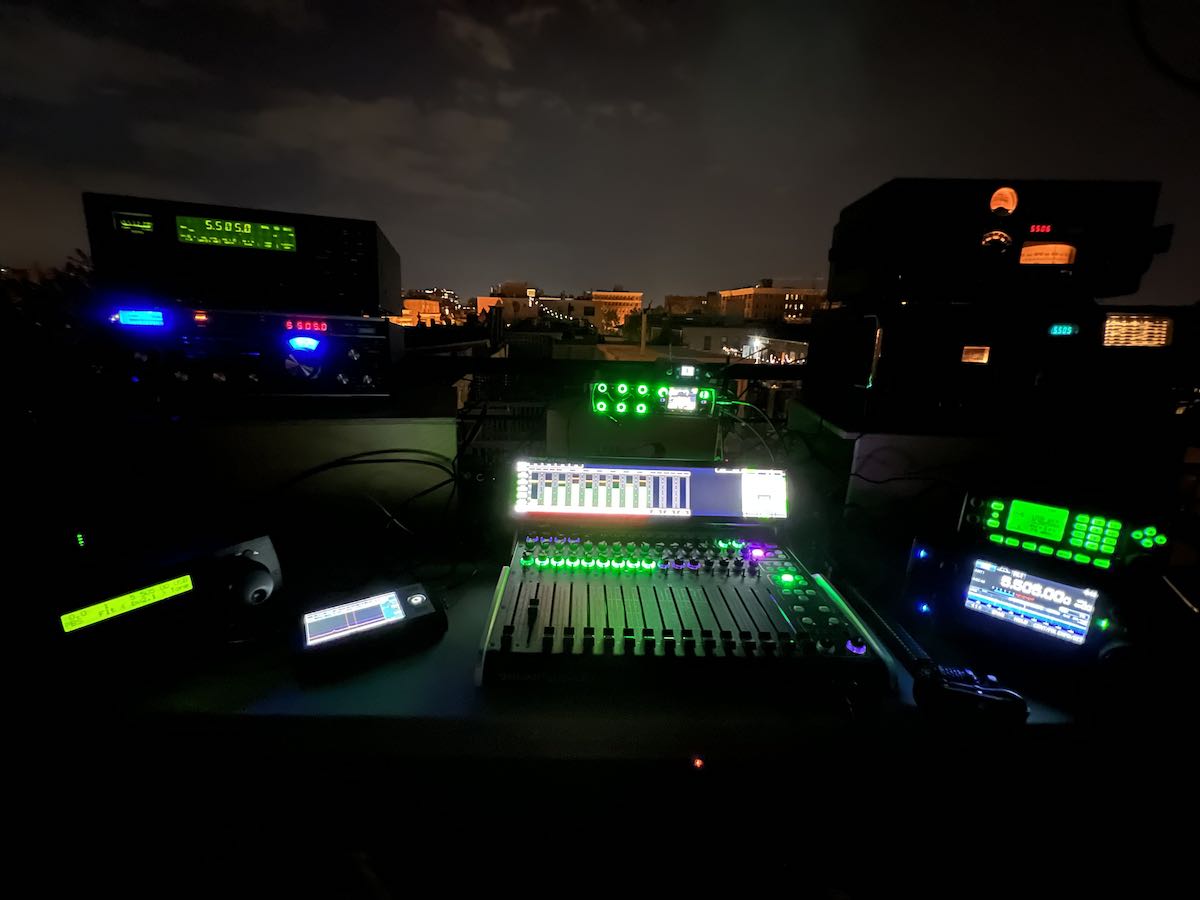 Many thanks to SWLing Post contributor, Matt Blaze, for the following guest post:
Many thanks to SWLing Post contributor, Matt Blaze, for the following guest post:
2022 rooftop receiver shootout
by Matt Blaze
I realized it’s been long past time for me to do another head-to-head receiver comparison “shootout”, where you can compare the audio from multiple radios receiving the same signal at the same time. Long time readers of Thomas’ blog may remember I’ve posted a few of these before.
So I took advantage of the nice weather and brought a bunch of radios, recording gear, and an antenna up to the roof to listen and record signals under an open sky. My neighbors, no doubt, wondered what I must have been up to. (Don’t tell them I’m just a harmless radio nerd.)
This year, our focus is on eight “dream receivers” from the 1980’s to the present. Each radio is at or near the top of the line in its class at the time of its release. Our radios include, in roughly reverse chronological order:
- Icom R-8600, a current production “DC to Daylight” (or up to 3 GHz, at least) general coverage communications receiver, with highly regarded shortwave performance.
- AOR AR-ONE, another DC to Daylight general coverage radio, less well known due to the high price and limited US availability. Excellent performer, but a terrible (menu-driven) user interface for shortwave, in my opinion.
- Reuter RDR Pocket, a very cute, if virtually impossible to get in the US, small production, high performance SDR-based shortwave portable receiver. It’s got an excellent spectrum display and packs a lot of performance into a surprisingly small package.
- AOR 7030Plus, an extremely well regarded shortwave receiver from the late 90’s; designed in the UK. It’s got a quirky menu-driven user interface but is a lot of fun to use.
- Drake R8B, the last of the much-beloved Drake receivers. Probably the chief competitor to the 7030.
- Drake R7A, an excellent analog communications receiver (but with a digital VFO) from the early 80’s. It still outperforms even many current radios.
- Sony ICF-6800W, a top of the line “boom box” style consumer receiver from the early 80’s. Great radio, but hard to use on SSB.
- Panasonic RF-4900, the main competition for the Sony. Boat-anchor form factor, but runs on batteries. Excellent performer, but also hard to use on SSB.
The radios were fed from my portable Wellbrook FLX-1530 antenna, using a Stridsberg Engineering HF distribution amplifier. So every radio was getting pretty close to exactly the same signal at its RF input.
Recordings were taken from the line output, if one was available, or the external speaker/headphone output otherwise. In either case, the audio was then isolated and converted to a balanced signal for recording.
For each signal, I recorded monaural “solo” tracks for each radio, as well as a narrated stereo track in which I compared the audio from each radio (one after the other) against the Icom R8600, with the audio from the R8600 on the left channel and the audio from the other radios on the right channel. This gives you a quick overview of what all the radios sound like.
The stereo recording requires some explanation. For it to make any sense, you MUST listen in stereo, using decent headphones if at all possible. You can switch earpieces back and forth (with your finger on pause and rewind) to get a quick idea of what each radio sounds like compared with a modern receiver, and how they handle things like fades and static.
The solo tracks, on the other hand, consist entirely of the continuous audio from a single radio, with no narration or interruption.
I recorded three different signals, for a three part comparison. (Parts four and up will come, hopefully, soon). I think both the differences and similarities will surprise you.
Part One
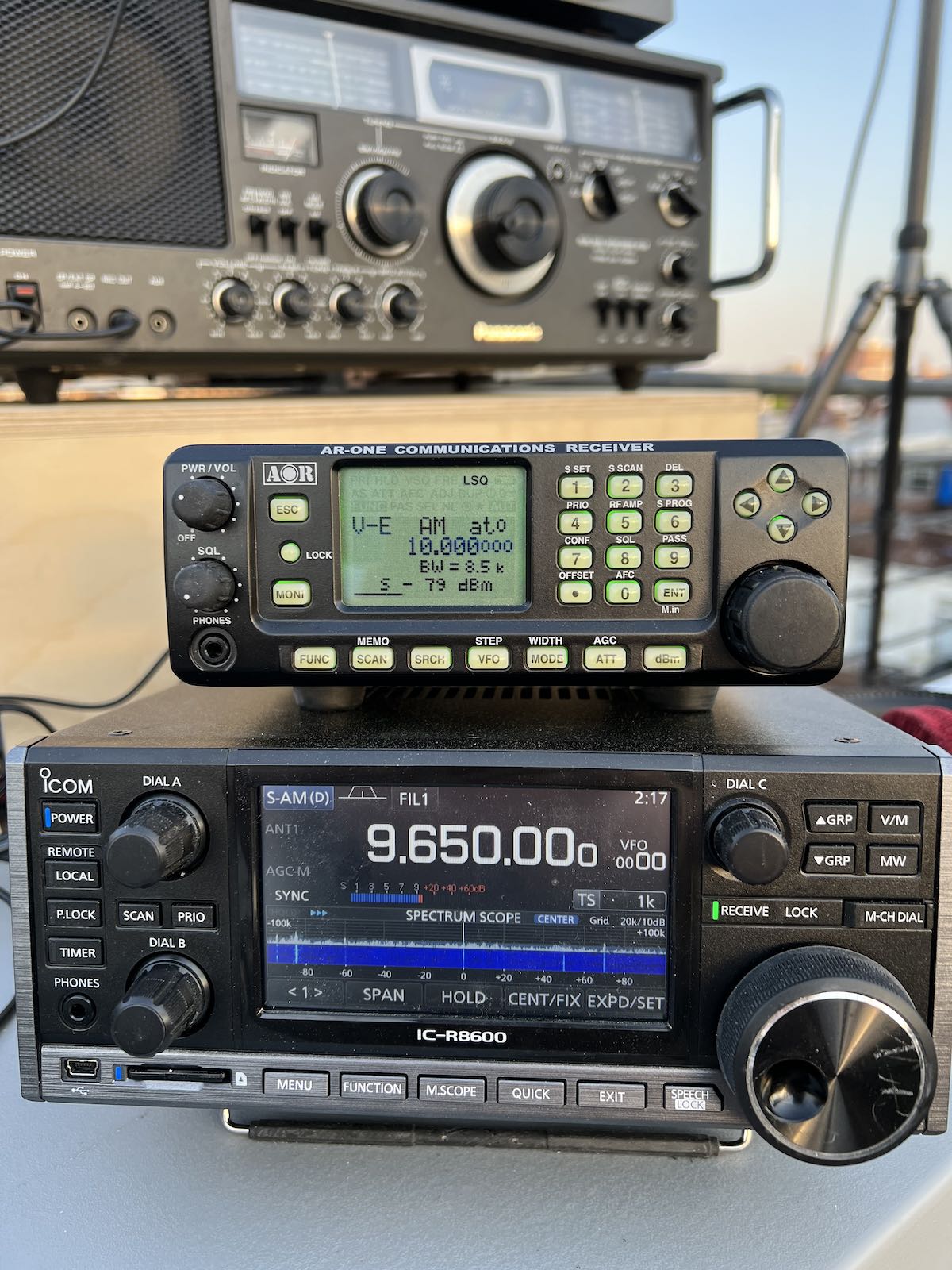 Our first signal was the BBC on 9915 KHz, broadcasting from Madagascar to western Africa. This signal was extremely marginal here, intended to show how each receiver can or can’t handle signals down in the noise. It’s definitely not “armchair copy”.
Our first signal was the BBC on 9915 KHz, broadcasting from Madagascar to western Africa. This signal was extremely marginal here, intended to show how each receiver can or can’t handle signals down in the noise. It’s definitely not “armchair copy”.
The stereo overview is at:
The individual receiver solo tracks can be found here:
Icom R-8600:
AOR AR-ONE:
Reuter RDR Pocket:
AOR 7030Plus:
Drake R8B:
Drake R7A:
Sony ICF-6800W:
Panasonic RF-4900:
Part Two
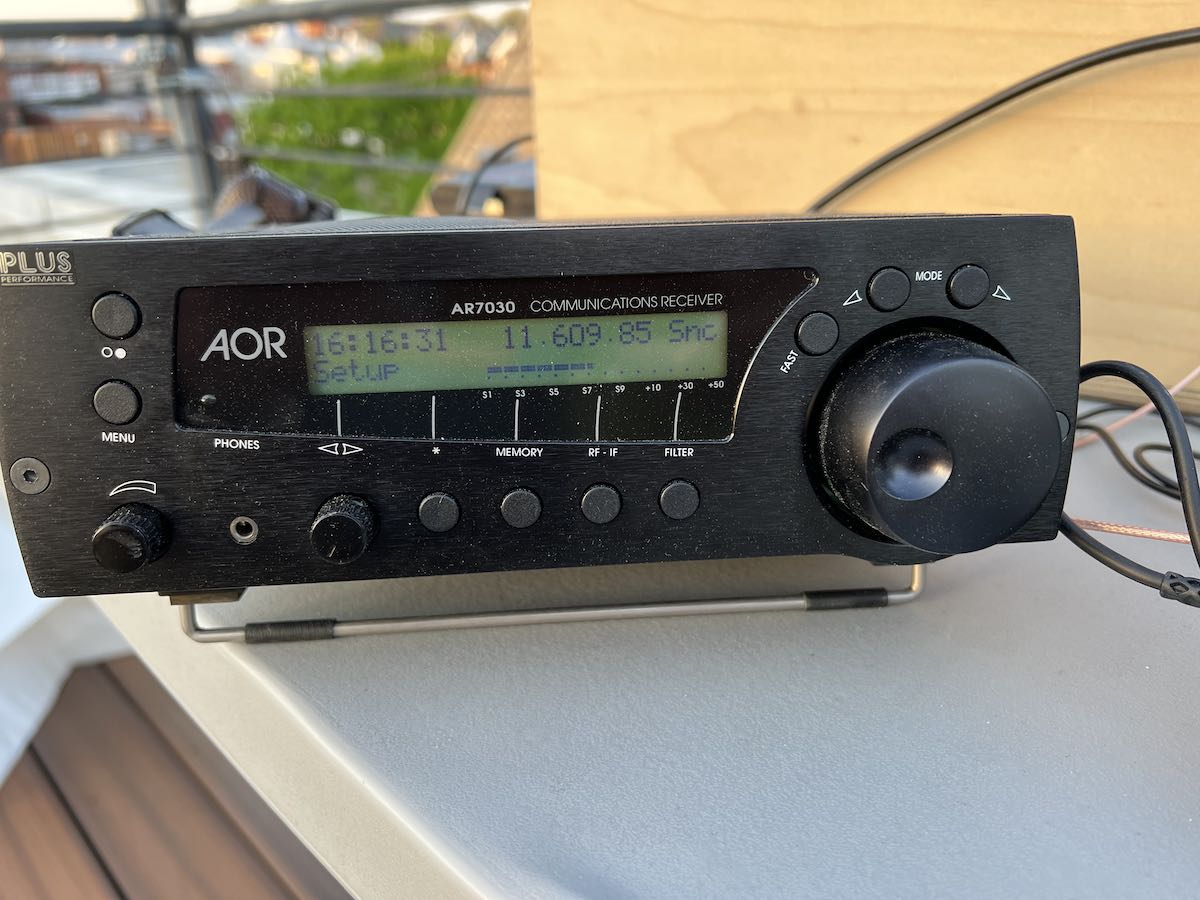 Our next signal was the Shannon (Ireland) aviation VOLMET broadcast on 5505 KHz USB. This synthesized voice gives the latest meteorological conditions at airports around Europe. The signal was not strong, but entirely readable. It shows how the radios handle a weak SSB signal. Note that the Sony and Panasonic consumer radios, though equipped with a BFO, were VERY hard to tune properly.
Our next signal was the Shannon (Ireland) aviation VOLMET broadcast on 5505 KHz USB. This synthesized voice gives the latest meteorological conditions at airports around Europe. The signal was not strong, but entirely readable. It shows how the radios handle a weak SSB signal. Note that the Sony and Panasonic consumer radios, though equipped with a BFO, were VERY hard to tune properly.
The stereo overview is at:
Receiver solo tracks can be found here:
Icom R-8600:
AOR AR-ONE:
Reuter RDR Pocket:
AOR 7030Plus:
Drake R8B:
Drake R7A:
Sony ICF-6800W:
Panasonic RF-4900:
Part Three
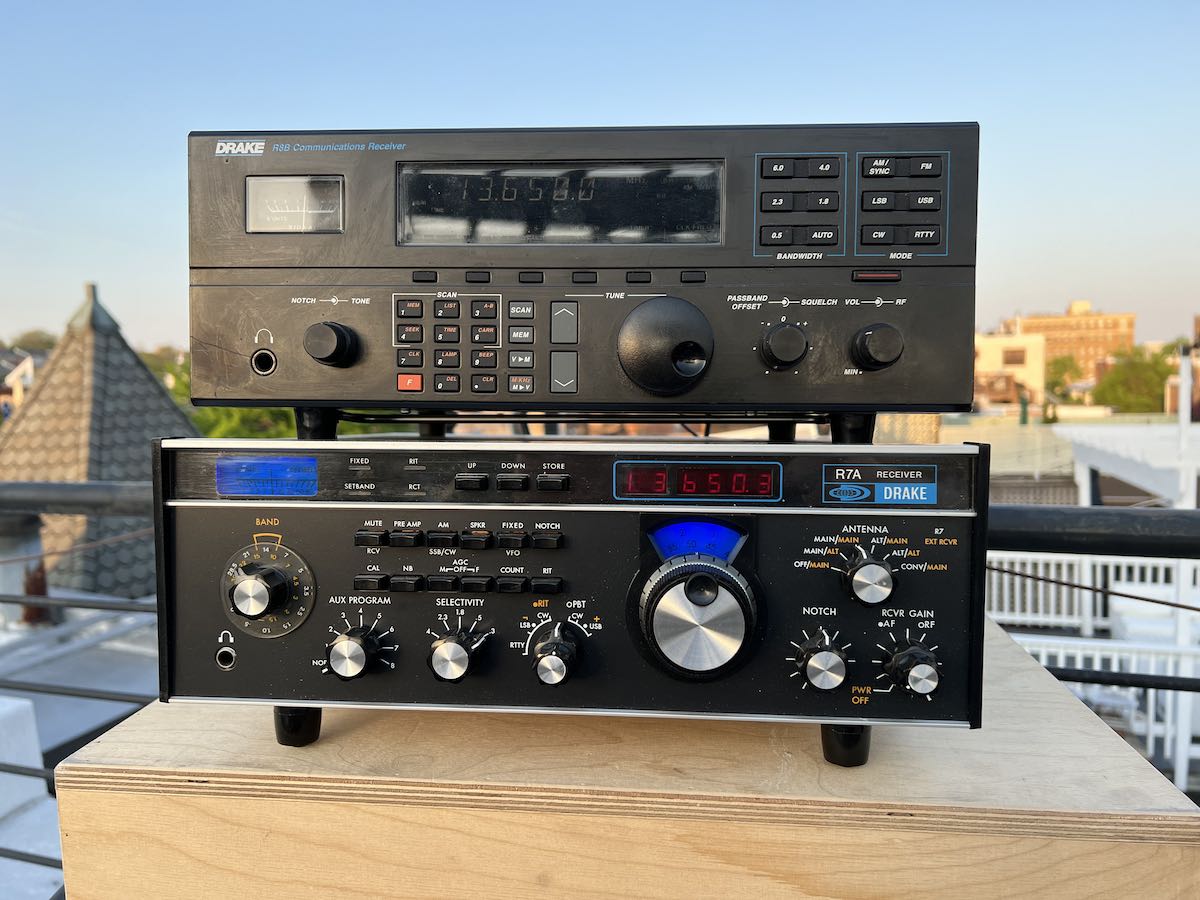 Our final signal was a stronger, though occasionally fading, shortwave broadcaster, Radio Romania International on 13650 KHz AM. This gives you a sense of how the receivers performed on a typical “average” signal that you might actually want to enjoy listening to. Because the radios have different filters and other capabilities, I tuned each radio to whatever sounded best; I did not attempt to use comparable settings (since no common settings existed).
Our final signal was a stronger, though occasionally fading, shortwave broadcaster, Radio Romania International on 13650 KHz AM. This gives you a sense of how the receivers performed on a typical “average” signal that you might actually want to enjoy listening to. Because the radios have different filters and other capabilities, I tuned each radio to whatever sounded best; I did not attempt to use comparable settings (since no common settings existed).
The stereo overview can be found at:
And the individual solo tracks are here:
Icom R-8600:
AOR AR-ONE:
Reuter RDR Pocket:
AOR 7030Plus:
Drake R8B:
Drake R7A:
Sony ICF-6800W:
Panasonic RF-4900:
Subsequent comparisons, hopefully soon, will focus on receiver performance on signals in crowded bands and under various kinds of interference and noise.
A quick note on production: The recordings were made with a 12 channel Sound Devices 833 recorder with a Sound Devices SL-16 mixing console. The audio was isolated and converted to balanced output with Switchcraft 318 direct interface boxes (highly recommended for recording radios with pro audio gear).
The stereo track narration was done by me in real time, as the signals were being recorded. I made some comments about which receivers I thought sounded best that were not always the same as what I would later conclude after carefully listening to the solo tracks once back inside. But judge for yourself. I used a Coles “lip” microphone, an amazing ribbon mic designed decades ago for the BBC for use in highly noisy environments. It was very effective in reducing the sometimes considerable street noise and other ambient outdoor sounds.
Thanks for listening and 73!

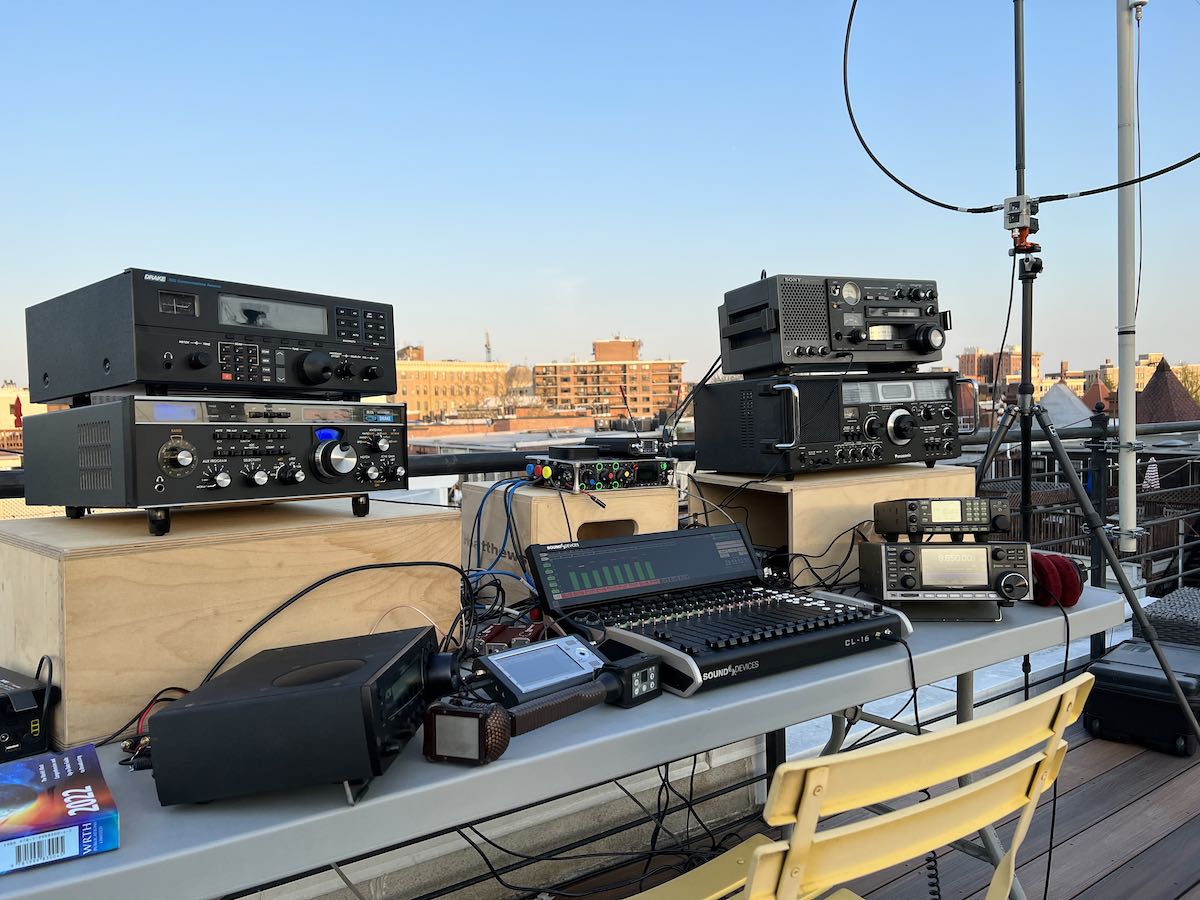
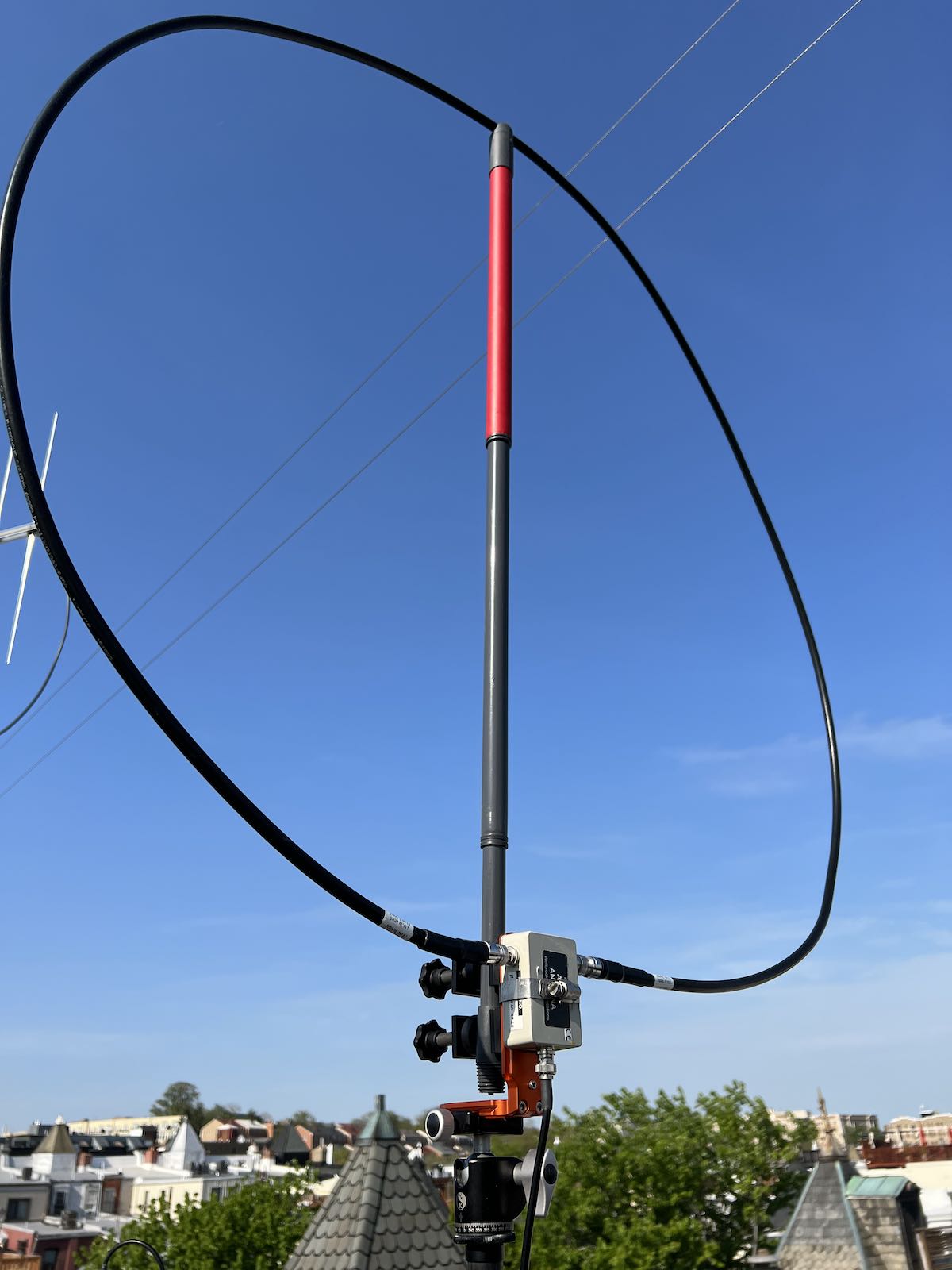
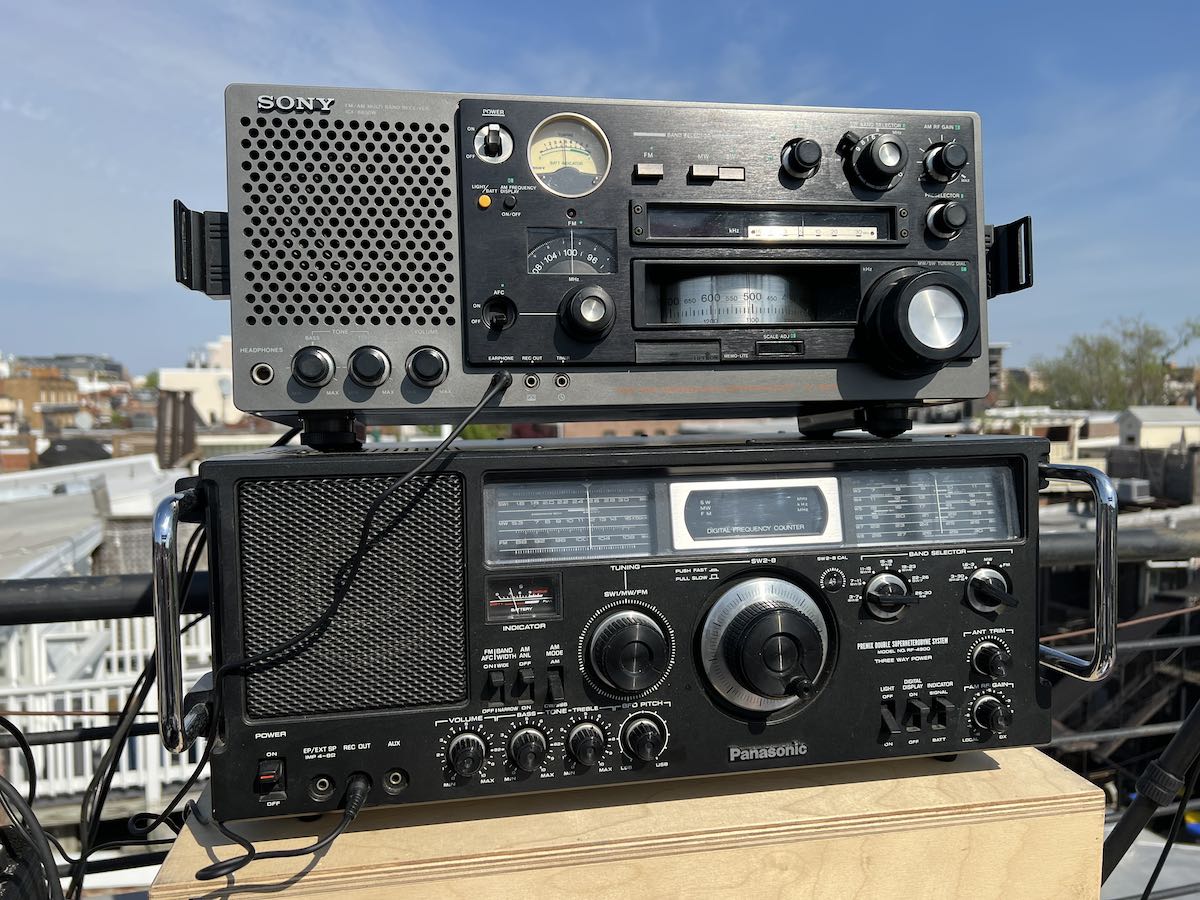
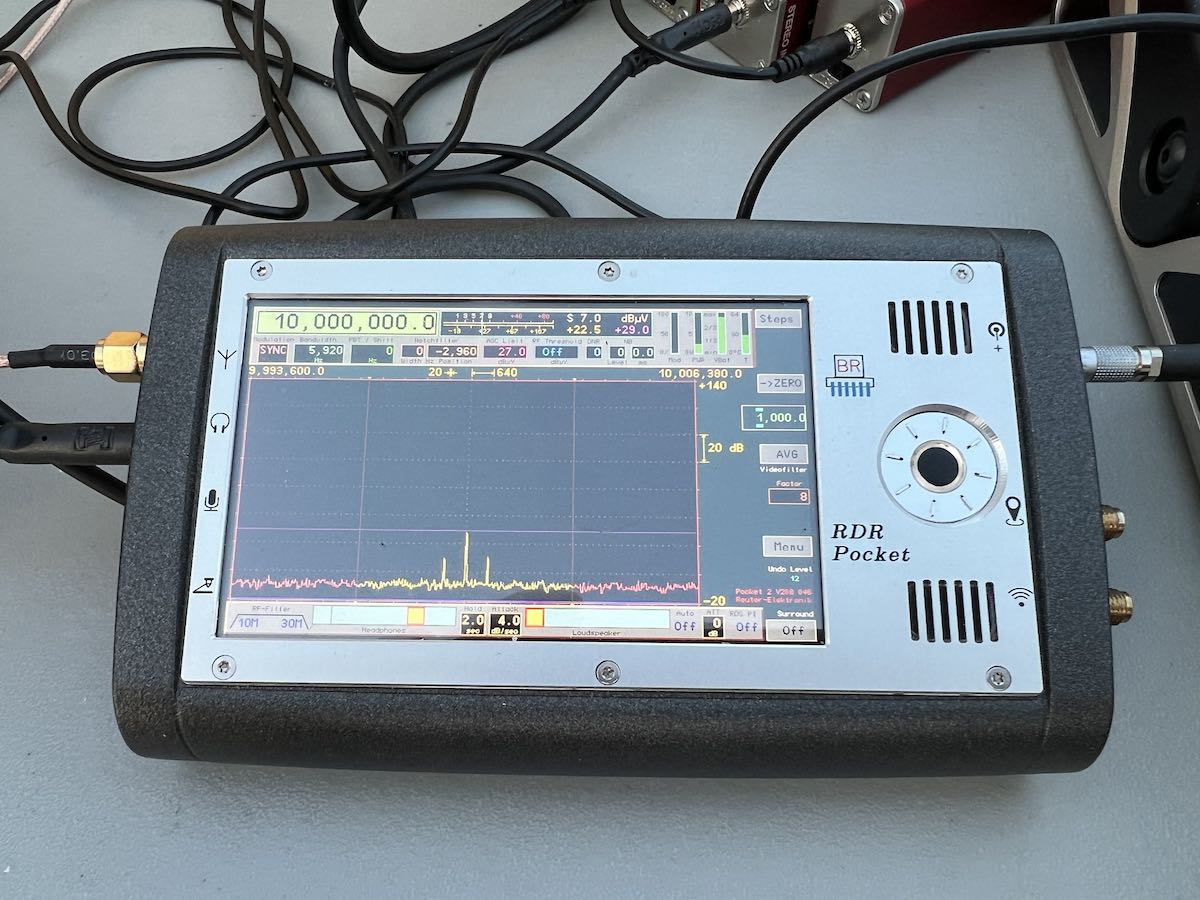
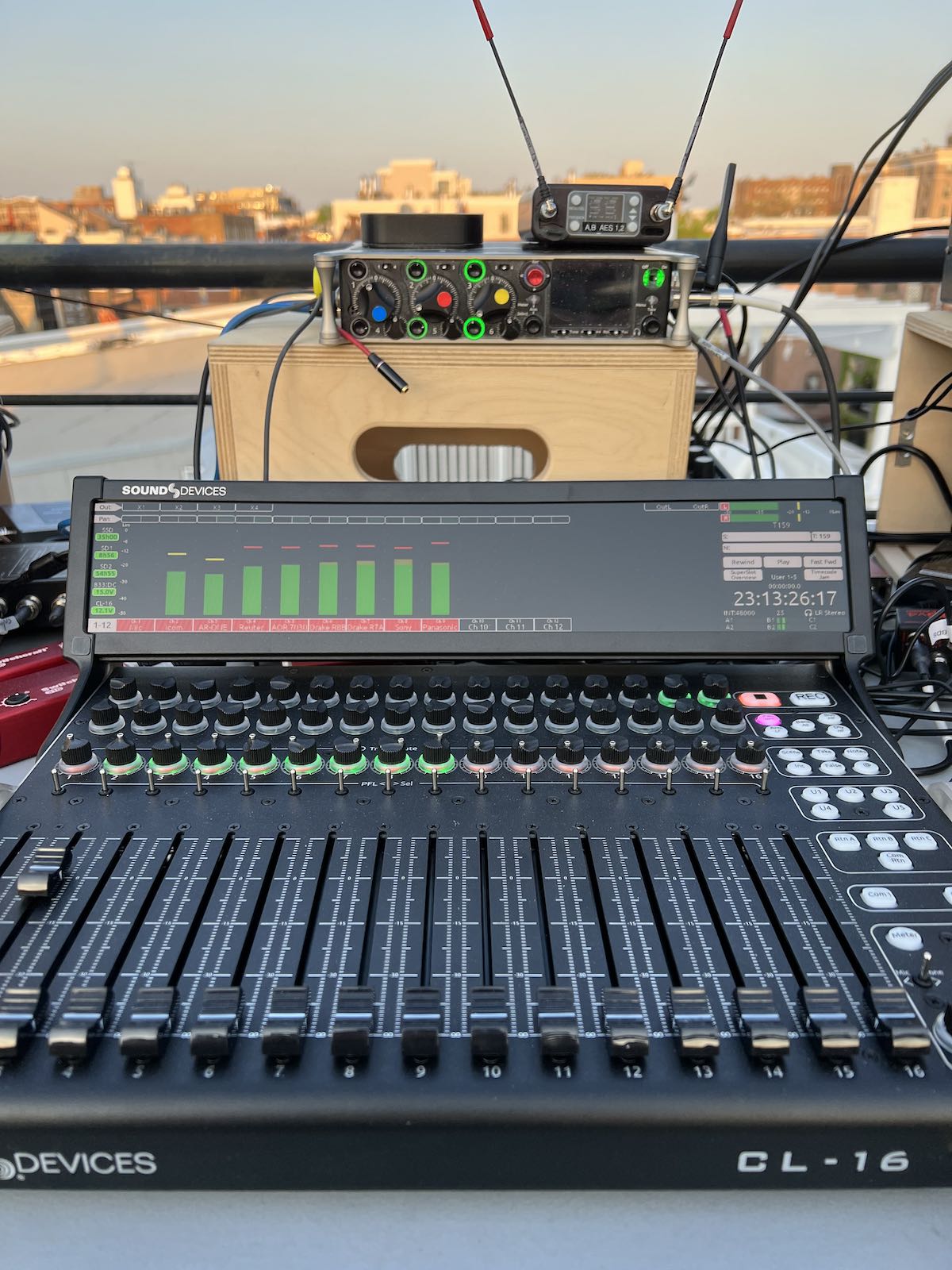
Hi Matt,
Great review. Thank you for all the hard work.
Unfortunately, I was unable to download / listen to any of the recordings from Pt 2 Drake R8B onwards, including none of the recordings in Part 3.
I thought I better report this in case it’s not just my computer…
Cheers!
73
Julian
What a great review thank you. My hearing is not that good anymore and I heard very little difference between them.
Matt,
Thank you for the hard work on this and the excellent presentation.
You know what might be really interesting to add to the mix? One of the modern portables. I would favor the Tecsun PL-880 (since I own one).
I suspect that the contemporary top-end portables would acquit themselves pretty well . . . but I no longer have a top-end tabletop for comparison.
Cheers, Jock
Jock,
I suspect you’re right, and including modern portables is definitely in the works. I originally planned to include several other radios, but I discovered at the last minute that my other RF distribution amp (needed to go past 8 radios) was stranded at my office. Since I already had lugged everything up to the roof, this is what I went with. But for the next installment, for sure.
-matt
Matt,
Great! I look forward to it.
Cheers, Jock
I used to have a lot of receivers, still have quite a few, and after a certain quality point, it pretty much came out to ergonomics, filters, and audio quality. My favorites hands down to use were my JRC NRD-515, and NRD-525. Both of mine were modified before I got them, and the only complaint I had about the 515 was it just sounded bad on AM, compared to some others. The right speaker helped a lot and I ran the audio into a mixer and it wasn’t too awful. My budget pick was my near mint Kenwood R-1000, which survived a trip cross country packed about as badly as a radio could be packed for shipment. I live in RF hell now, and nothing I’ve tried has made listening to HF in my apartment even tolerable. Of all my receivers that are gone now, I miss the NRD-515 most of all.
One of the surprises was an Icom R71A I had bought on Ebay and did an audio and detector mod on that I found online. It was shockingly better after the mod, and that particular one had every option in it along with the FL44A filter, and the battery eliminator sold to eliminate the loss of function if/when the lithium battery finally died . AM went from bad to pretty great (On an external speaker), and SSB went from good to fantastic. One of the benefits of that mod was the S-Meter calmed down on modulation peaks.
I was very sad to have to sell it when I needed cash, but the present owner is beyond thrilled with it.
Superb comparison! I’m disappointed in how poorly the 8600 did as the reference radio, being matched or beaten by some of the older radios like the 7030Plus. Did you say that the 8600 has no real synchronous AM? That seems to be a poor idea.
Eric,
Thanks. Yes, I think what this shows is how little actual room for improvement there is in decent quality modern HF receivers of the last few decades (once you get past really crappy radios). While the measurable performance specifications are obviously different for all these radios (and the more recent ones generally do “better” in that regard, those metrics aren’t as important as we’d like to think they are for demodulating the signals we encounter on the air in practice. (We’ll likely see bigger differences in future editions when I compare the receivers under interference and under closely spaced band conditions). What the modern radios buy you in practice is fancy features (multiple VFOs, memories, more filters, etc), not so much better ability to render the signals you want to listen to.
The R-8600 has a sync mode, but it’s just not very good (as is disappointingly typical of most radios that have this feature). It seems to be exactly the same as the sync function on the otherwise excellent (but too heavy to take to the roof) R-9500. It’s very good (and very useful) for isolating the upper and lower sidebands, but it only stays locked on strong, solid signals that don’t really need sync mode. Fortunately, there’s little audible difference when it goes out of lock, so it’s not too annoying. The 7030 sync mode, on the other hand, works extremely well (though you must use the passband tuning to isolate the sidebands).
Best
-matt
I commend you for quite an involved process. Very nice presentation. Very well laid out. Photos and clips are excellent. One question I have is wouldn’t a controlled test with a measured lab input and resulting measured output have been more accurate? Harry N9CQX
Henry,
The question is “accurate” for what purpose. As an engineer, I appreciate measurement of performance metrics as much as anyone, but that’s not what I’m trying to do here. It would be easy enough to measure various specifications – sensitivity, selectivity, dynamic range, etc, for any of these radios (and, indeed, you can look them up if you’re interested). But those numbers only go so far in telling you how well they will demodulate and render any particular signal, and there’s a lot that they don’t capture. For example, sensitivity tells you the how well the receiver can pull in signals near the limits of the self-noise of the radio. But receiver self-noise isn’t usually the limiting factor for weak signals, it’s local and atmospheric noise, which is a far stronger at effect most stations (including my own). Instead, what matters is a combination of factors (some captured by the specifications, others not) that affect the ability to pull out good audio from signals competing with other noise sources. Ditto selectivity, dynamic range, and so on. These all matter, but most real-world signals don’t push their limit, especially in today’s less crowded HF conditions. Most of us want to hook our radios up to antennas, not signal generators.
In the end, receiver performance depends on a very complex combination of factors, some of which are inherently subjective,. So my goal was to present the final product – the demodulated audio they render – in a way that lets people compare them directly.
Cheers
-matt
Thanks for this amazing report, Matt! Although I live on the 54th Floor of a highrise, I have no balcony and residents can’t access the roof. I am green with envy for your rooftop listening post.
Awesome review and great set of radios. Thanks for taking the time to do this article. If you don’t mind I will point to this article in one of my YouTube shows. My channel is Tom’s Radio Room Show (ID=hamrad88).
Tom Stiles
Tom – sure, of course.
I sent the pics to my Christmas Gift Procurement Manager and she replied “i think you already have too many radios and I dont see how having a dozen more will make you happy?” It will please me immensely yo pick up a signal on at least one of them if you cant hear them then no QSL hihi
John VE3IPS
“Too many radios?”. Does not compute! Does not compute! Initiating reset procedure. 😉
Excellent comparisons – and relevant, as I have a similar ICF-6700W en route. Having the simultaneous stereo feeds really helps, though I was surprised at generally how minor the 8600’s advantage seemed to be. What model of Stridsberg distribution amp were you using? I’ve been considering one or a Cross Country Wireless model for home use.
Thanks Mike, Yes, the receivers are definitely more similar than different, at least fro AM signals. I expect we’ll see bigger differences in subsequent installments when I look at closely spaced signals and interference.
As for the distribution amp, I used a Streidsberg MCA108M, which is an 8 port roughly unity gain multicoupler/amp that covers below 500 KHz to 50 MHz.